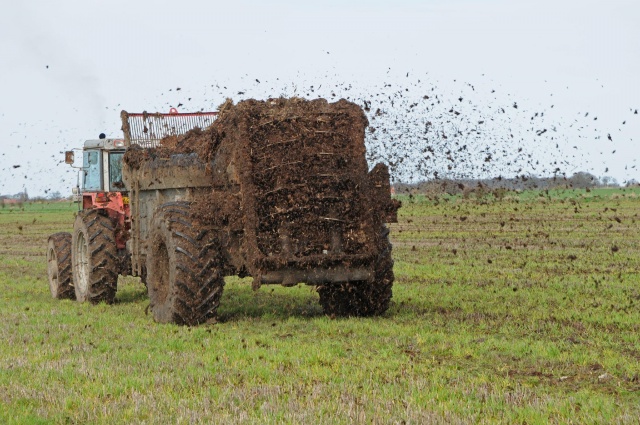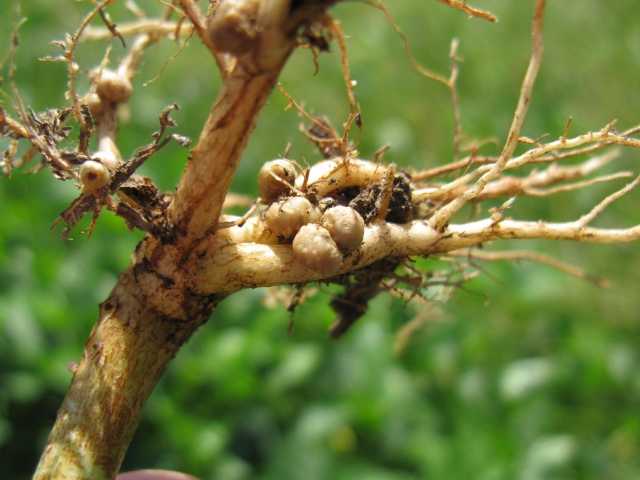Microbes instead of chemicals: how to reinvigorate arable lands
Do we really eat poorer quality bread than our ancestors? What harm have the many decades use of artificial fertilizers and chemical pesticides done to our farmlands? How could bacteria, algae and fungi help establish a more sustainable agriculture? The MTA and the Hungarian Society for Microbiology sought to answer these questions during a conference held at the Academy and with the support of the American Society for Microbiology.
In the past five decades, it has become the norm to promote soil fertility by compensating for missing nutrients through the use of artificial fertilizers. And if an unrelenting pest is attempting to ruin the year’s harvest, we call upon the latest miracle product developed by chemists to combat them. However, by now it has become clear that soils and cultivated plants require much more than a simple “refill” of macronutrients. Furthermore, the use of chemicals could also be minimized if we made the most of the potentials of soil ecosystems and other microorganisms.
Limitless growth and its drawbacks
These days, we rarely see huge manure heaps alongside arable lands. Most farmers decide to make up for lost chemical elements carried away with the harvested crop in an artificial manner. Naturally, cultivated plants are able to satisfy their carbon and oxygen needs through the air easily. However, without human interference, other indispensable elements the earth contains would diminish rapidly after every harvest.
In their own interest, farmers regularly supply the soil with nitrogen, phosphorus and potassium. The chemical symbols of these three elements make up the name of NPK fertilizers. Thanks to fertilization, high yielding breeds grow faster. However, farmers generally pay less attention to supplying meso and trace elements, which are required in much smaller quantities. Consequently, the proportion of these substances in the cultivated soil diminishes year by year. Moreover, since the plants grow fast due to NPK fertilizers, the absorption of meso and trace elements is not as efficient as it would be if macro elements were present proportionally. Consequently, it is possible that our ancestors’ bread had more mineral content in it than the bread in today’s bakers’ oven.
Effective algae and beneficial microbes
Surprisingly, mixing meso and trace elements with currently used artificial fertilizers is not a very effective method. Farmers gain much more if they spray the leaves of the growing plants with foliar fertilizers, in which these elements appear in organic bonds or often The absorption efficiency of these leaf fertilizers can be as high as 90%. This latter method might be the simplest example of microbial agriculture since algae used in this method do not reproduce on the cultivated soil, but in enormous tanks and are sprayed on the plants “ready-made”. However, there are cases when microbes are the most useful if they start reproducing fast on the spot, i.e. in the soil itself.
 Manure spreader on an English farmland Source: Flickr/Natural England
Manure spreader on an English farmland Source: Flickr/Natural England The practice of spreading manure, which is rarely done nowadays, used to be a similar blessing for soils. Not only essential elements, but also other organic materials were introduced into the soil, which supported the regeneration of soil micro flora. These soil bacteria and fungi help the plants to grow either by fixing the nitrogen of the air, or by enhancing the uptake of mineral substances by the roots.
Three gentle ways of soil enrichment
By examining soil microbes, researchers have discovered that these miniature organisms can serve farmers in three ways:
- they can help the nutrient intake of plants;
- they can support the fight against pests;
- they can enhance the general fitness of plants.
Of course, the system is not that simple, as some microbes can have more than one beneficial role. Let us see the possibilities along these lines.
Living nutrient suppliers in the soil
Some biological methods are even capable of supplying the famous triad of artificial fertilizers: nitrogen, phosphorus and potassium. It has been established that the ability of fixing nitrogen from the air is not unique to the well-known root bacteria of papilionaceous plants. This feat is also performed by free- living soil bacteria (Azospirillum, Azotobacter). If these are injected into the soil, remarkably less artificial nitrogen is needed.
 Nodules on the root of a cowpea (Vigna unguiculata), nitrogen fixing bacteria exist inside of these. Other bacterium species occur freely in the soil, so these can enhance the quantity of nitrogen available for plants even if no papilionaceous plants are present. Source: Flickr/Harry Rose
Nodules on the root of a cowpea (Vigna unguiculata), nitrogen fixing bacteria exist inside of these. Other bacterium species occur freely in the soil, so these can enhance the quantity of nitrogen available for plants even if no papilionaceous plants are present. Source: Flickr/Harry RoseSome soils are very rich in phosphorus, but plants are unable to absorb it. In such cases once again certain bacteria (e.g. Bacillus megaterium) can offer their assistance.
Potassium, as an ingredient of potash, is rather widely known. When stubbles are burnt, a considerable amount of potassium is reintroduced into the soil with the ash. However, this essential element can also be provided by bacteria and fungi which are responsible for decomposing roots and other plant residues in the soil that is if we ensure the right amount of these organisms are present.
Biological war against pests
Domesticated plants serve as a scrumptious meal for myriad of organisms. Persistent fungal diseases and insects regularly attack crops. Luckily, pests also have their natural enemies, which can fight on our side. First of all, there are fungi such as the Trichoderma species, which attack pathogenic fungi. Other fungus species can successfully combat insects. An example for this is the micro fungus which can be seen on the grayed corpses of flies in the autumn.
Naturally, skillful fighters can be found amongst bacteria as well. The species Bacillus thuringiensis had an amazing career. A famous international agricultural company built the genetic code of a toxin produced by this bacterium into a certain maize breed to make it less tasty for the western corn rootworm.
In fact, this bacterium can kill insect larvae even more effectively, as it produces simultaneously many types of toxin, which infect the larvae. Several products containing the spores of such bacteria are available in Hungary.
Plant fitness
Finally, some bacteria and fungi living on the roots of plants can contribute to the fitness of the plant by producing plant hormones. Additionally, fungus hyphae can also enhance nutrient intake. In an arid period, chances of crop survival are better in a soil treated with such bacteria and fungi.
 Soils containing good microbial communities could enhance the stamina of plants living in them Source: pexels.com
Soils containing good microbial communities could enhance the stamina of plants living in them Source: pexels.comMicrobes with a fingerprint
A conscientious farmer would of course want to know how much soil improvement would cost him, irrespective of whether he uses chemicals or bacteria. Thus it is crucial to see what happens to microorganisms in the soil. What proportion of them survives the winter? Are they in fact absorbed into plant tissues where they can help the fight against pests? Is it really the effect of microorganisms injected into the soil by humans, or rather the influence of other organisms present in the soil anyway?
The genetic material of the microbe in question can answer these and other similar questions. It is possible to find unique DNA or RNA sequences that serve as a genetic fingerprint, and thus can identify the organism. With this method, researchers can keep a close eye on the microbes and their descendants that have been introduced into the soil.
Step by step changes
Some Hungarian framers have already started using microbiological soil inoculation methods, and several companies have been established to distribute such products. Although ideally we should create a rich microbial community in the soil, which could help replace a remarkable portion of artificial fertilizers and to some extent even chemical pesticides, it is also possible to use only some type of products or to introduce them gradually.
This article is based on a conversation with István Balogh microbiologist, an organizer of the conference Using microbiological products for sustainable environment and agriculture. The conference was hosted by the Hungarian Academy of Sciences and the Hungarian Society for Microbiology and it was supported by the American Society for Microbiology. Academician Ervin Balázs, head of MTA ATK (Centre for Agricultural Research) talked about the role of algae living in the soil. Tibor Szili-Kovács, a researcher in MTA ATK TAKI (Institute for Soil Sciences and Agricultural Chemistry) lectured on the degradation of soils and outlined the possibilities of reversing this process. György Turóczi from the Plant Protection Institute, Szent István University delivered a lecture on the ways of protecting plants from insect pests through biological methods.
